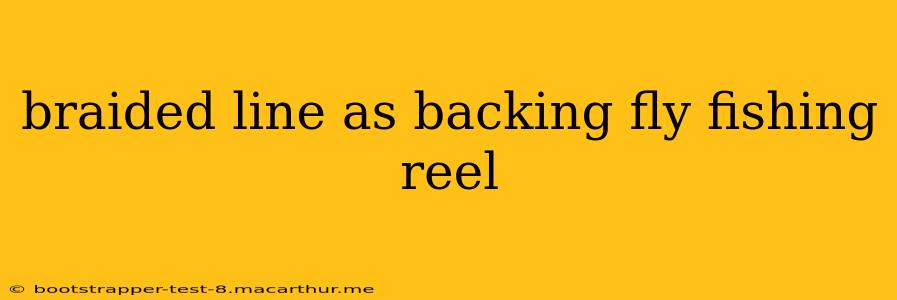Fly fishing relies on delicate tippets and leaders, but the fight with a powerful fish can quickly deplete your fly line. This is where backing comes in—providing a substantial reserve of line on your reel to handle strong runs and large fish. While traditional monofilament backing has been the standard, braided line is increasingly popular due to its superior strength-to-diameter ratio. This comprehensive guide will explore the advantages and disadvantages of using braided line as backing for your fly fishing reel.
Why Use Braided Line as Backing?
The primary advantage of braided backing is its incredible strength. For a given diameter, braided line is significantly stronger than monofilament. This means you can fit more backing onto your reel, giving you a much greater capacity to handle long runs from large fish. This is particularly crucial in situations where you're targeting powerful species like salmon, tarpon, or large trout.
Think of it this way: You can fit more yards of braided line onto your reel than you can with monofilament, providing more insurance when battling a strong fish.
What are the Disadvantages of Braided Backing?
While braided line offers considerable advantages, it's not without its drawbacks. One key concern is its tendency to dig into the spool. This can lead to uneven winding and even damage to the line itself, especially if not carefully managed. Furthermore, braided line can be more difficult to tie knots with, requiring specialized techniques. Finally, the slickness of braided line can sometimes make it harder to control during a fight.
What type of braided line is best for backing?
Several types of braided line are suitable for backing, but those specifically designed for saltwater fishing often perform better due to their higher abrasion resistance. Look for lines made from high-quality materials like Dyneema or Spectra. These materials are known for their exceptional strength and durability. Avoid lines designed solely for spinning or baitcasting reels, as they may not have the properties needed for smooth casting performance.
How much backing should I use?
The amount of backing you need depends on several factors, including the size of your reel, the diameter of your fly line, and the species of fish you target. As a general rule, aim for at least twice the length of your fly line. This provides ample capacity for unexpected long runs. Always double-check your reel's capacity chart for specific recommendations.
How do I tie braided backing to my fly line?
Tying braided line to your fly line requires careful attention. The Albright knot is a popular and reliable choice, but practicing beforehand is crucial to ensure a secure connection. Many online resources offer step-by-step instructions and videos demonstrating proper knot tying techniques. A poorly tied knot can fail under pressure, leading to lost fish and potentially lost gear.
Is braided backing more expensive?
Generally, braided backing is slightly more expensive than traditional monofilament. However, the increased strength and capacity often justify the extra cost, particularly for anglers targeting large or powerful fish. Remember, a strong, reliable backing is crucial for landing trophy fish and preventing costly gear loss.
Can I use braided line as backing on all reels?
While braided line can be used on most fly reels, it's essential to check your reel's specifications. Some reels may not be designed to handle the smaller diameter of braided line, potentially leading to problems with line slippage or uneven winding. Always consult your reel's manual before making a switch.
Conclusion
Braided line offers significant advantages as fly reel backing, providing superior strength and capacity for handling large and powerful fish. However, it’s important to be aware of the potential drawbacks, such as its tendency to dig into the spool and the need for specialized knot-tying techniques. By carefully considering your needs and selecting the appropriate type and amount of braided line, you can significantly enhance your fly fishing experience. Ultimately, the choice between braided and monofilament backing comes down to individual preferences and fishing conditions.
